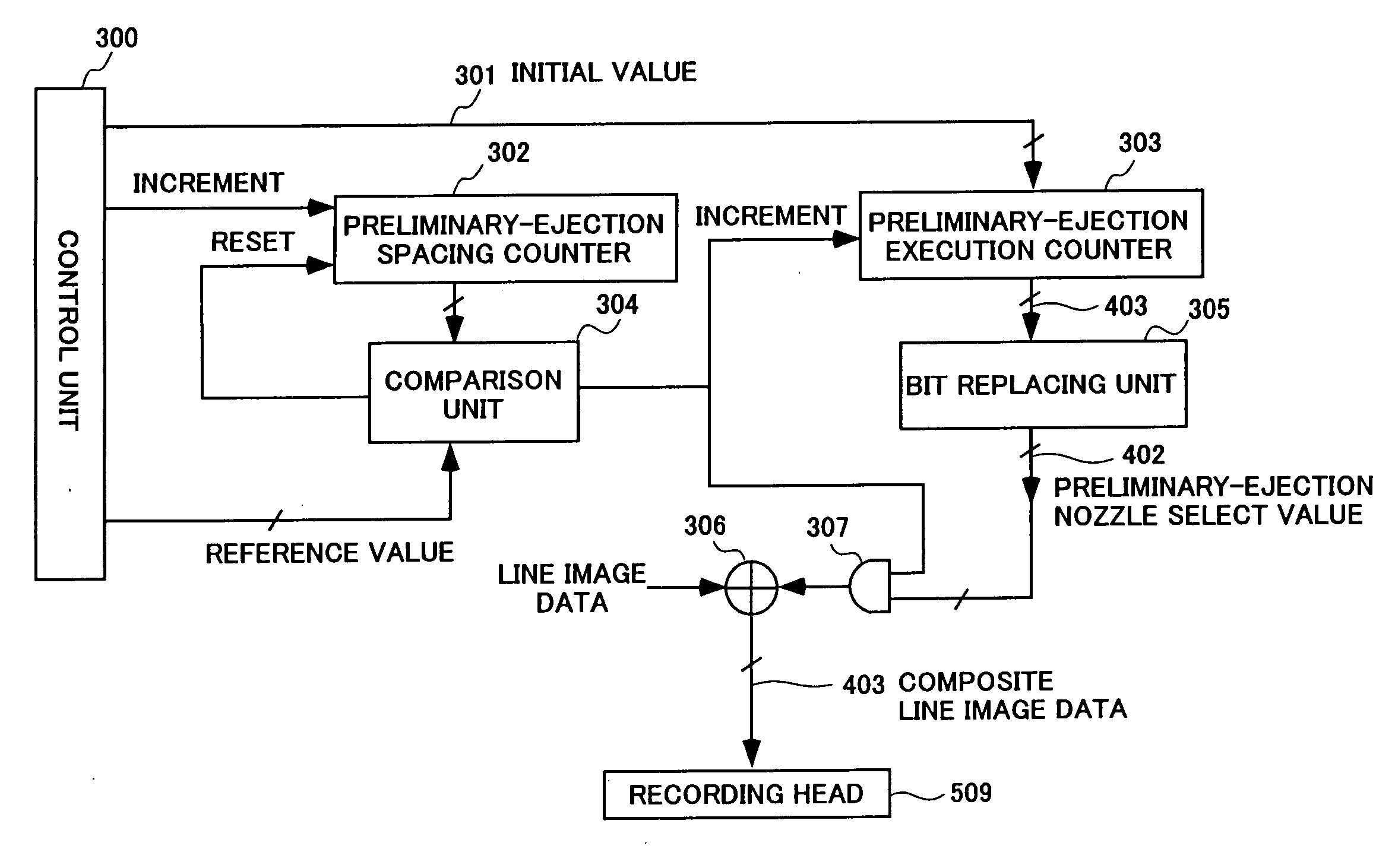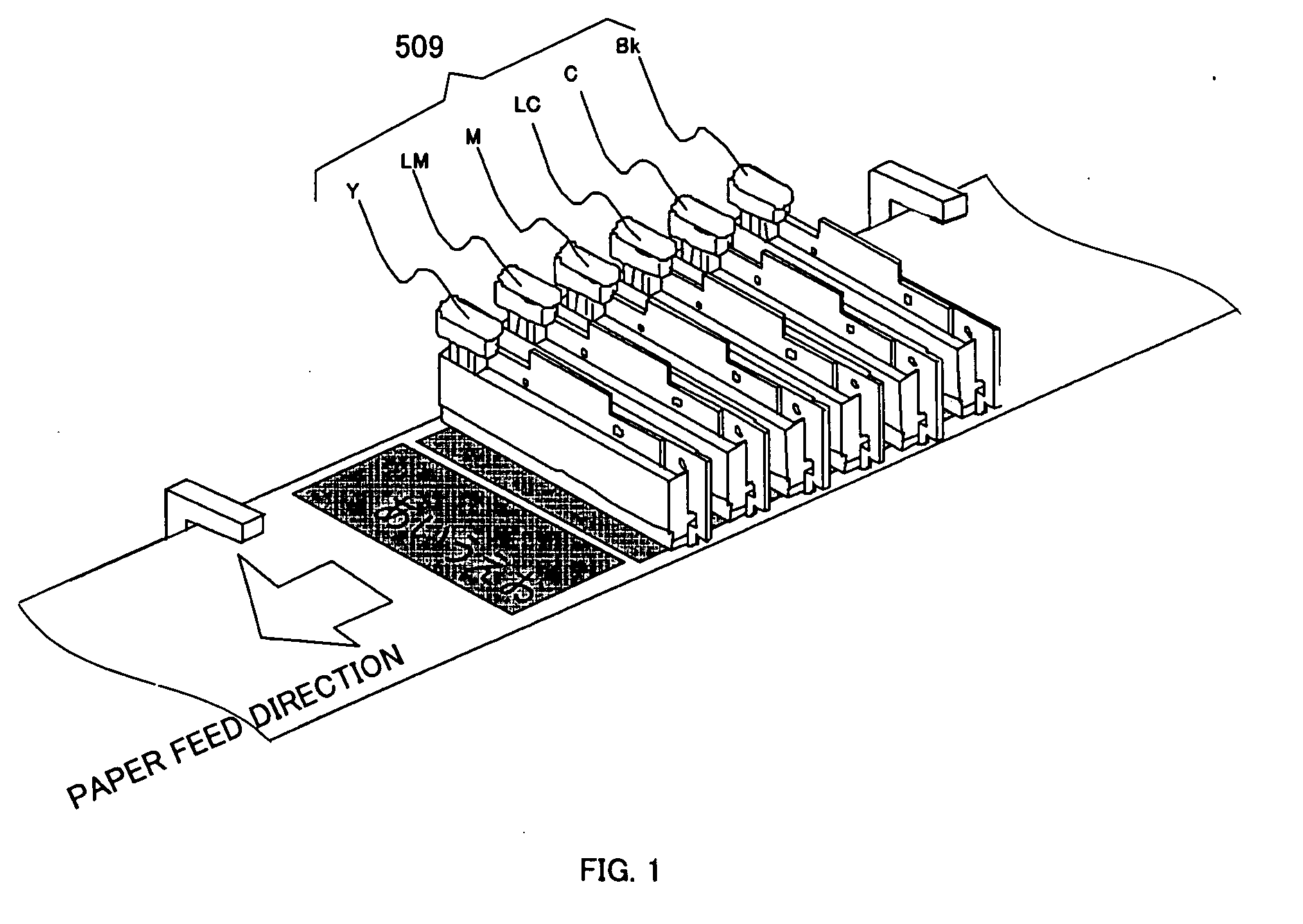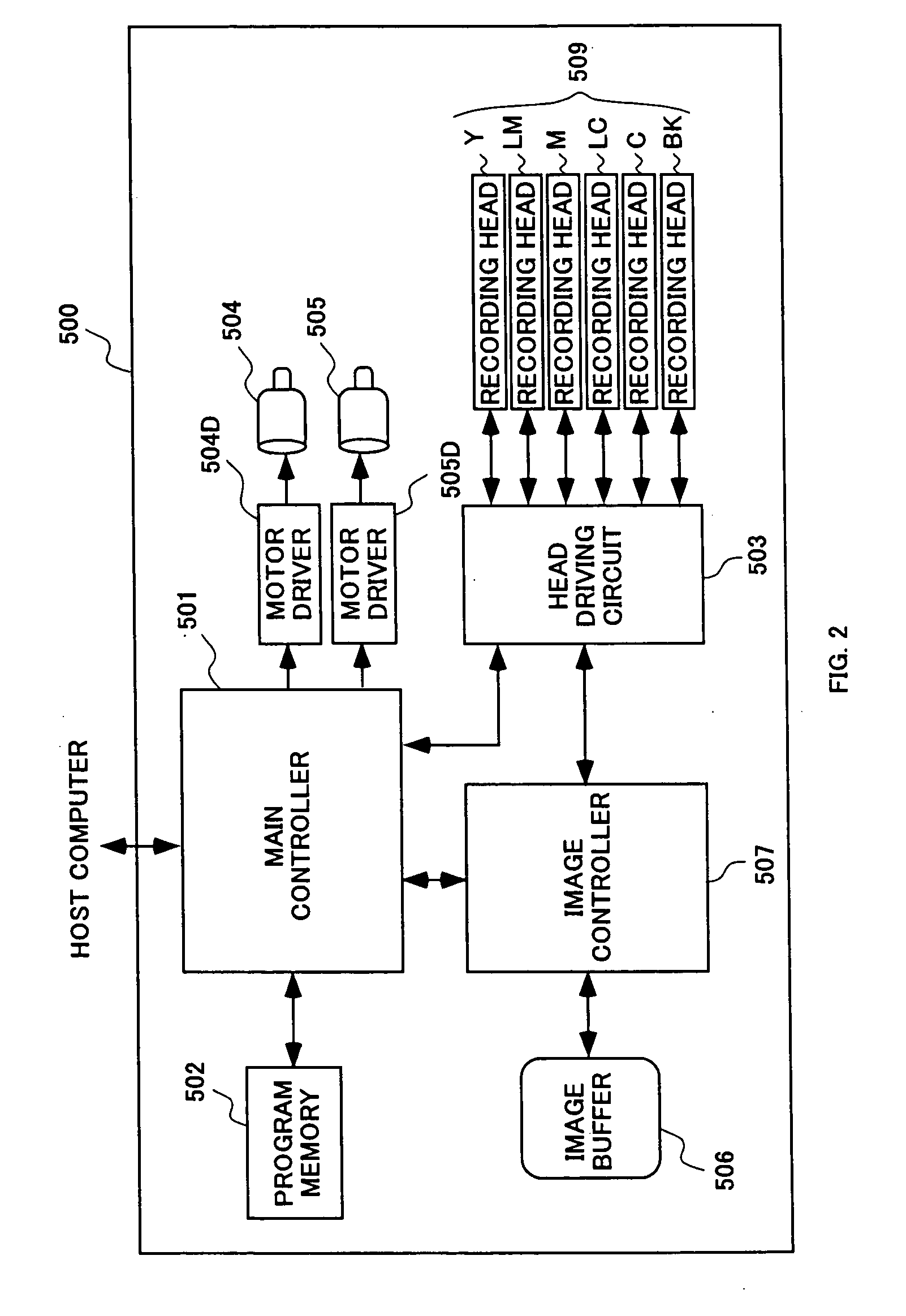Ink jet printer and preliminary-ejection control method
a technology of ejection control and printer, which is applied in the direction of printing, other printing apparatus, etc., can solve the problems of ejection failure, complex control, and inconvenient pre-ejection method for continuous paper without margin, so as to reduce the time at least by half, and reduce the number of counters
- Summary
- Abstract
- Description
- Claims
- Application Information
AI Technical Summary
Benefits of technology
Problems solved by technology
Method used
Image
Examples
Embodiment Construction
[0001] 1. Field of the Invention
[0002] The present invention relates to an ink jet printer that performs a so-called preliminary ejection for recovering the recording heads and the preliminary-ejection control method thereof.
[0003] 2. Related Art
[0004] Conventionally, an operation called “preliminary ejection” has been performed on a printer, such as an ink jet printer, because ink is not always ejected from all the nozzles during the execution of recording. The “preliminary ejection” refers to the ejection of ink from the nozzles of the recording heads at a predetermined time, not to record image data, but to always keep the nozzles supplied with fresh ink even if those nozzle are not used for image data recording. This preliminary-ejection processing removes the causes of ink ejection failures, such as bubbles, dust, or high-viscosity ink thicken by the vaporization of solvent to such an extent that the viscosity is too high for the ink to be used recording and, in addition, ad...
PUM
 Login to View More
Login to View More Abstract
Description
Claims
Application Information
 Login to View More
Login to View More - R&D
- Intellectual Property
- Life Sciences
- Materials
- Tech Scout
- Unparalleled Data Quality
- Higher Quality Content
- 60% Fewer Hallucinations
Browse by: Latest US Patents, China's latest patents, Technical Efficacy Thesaurus, Application Domain, Technology Topic, Popular Technical Reports.
© 2025 PatSnap. All rights reserved.Legal|Privacy policy|Modern Slavery Act Transparency Statement|Sitemap|About US| Contact US: help@patsnap.com



